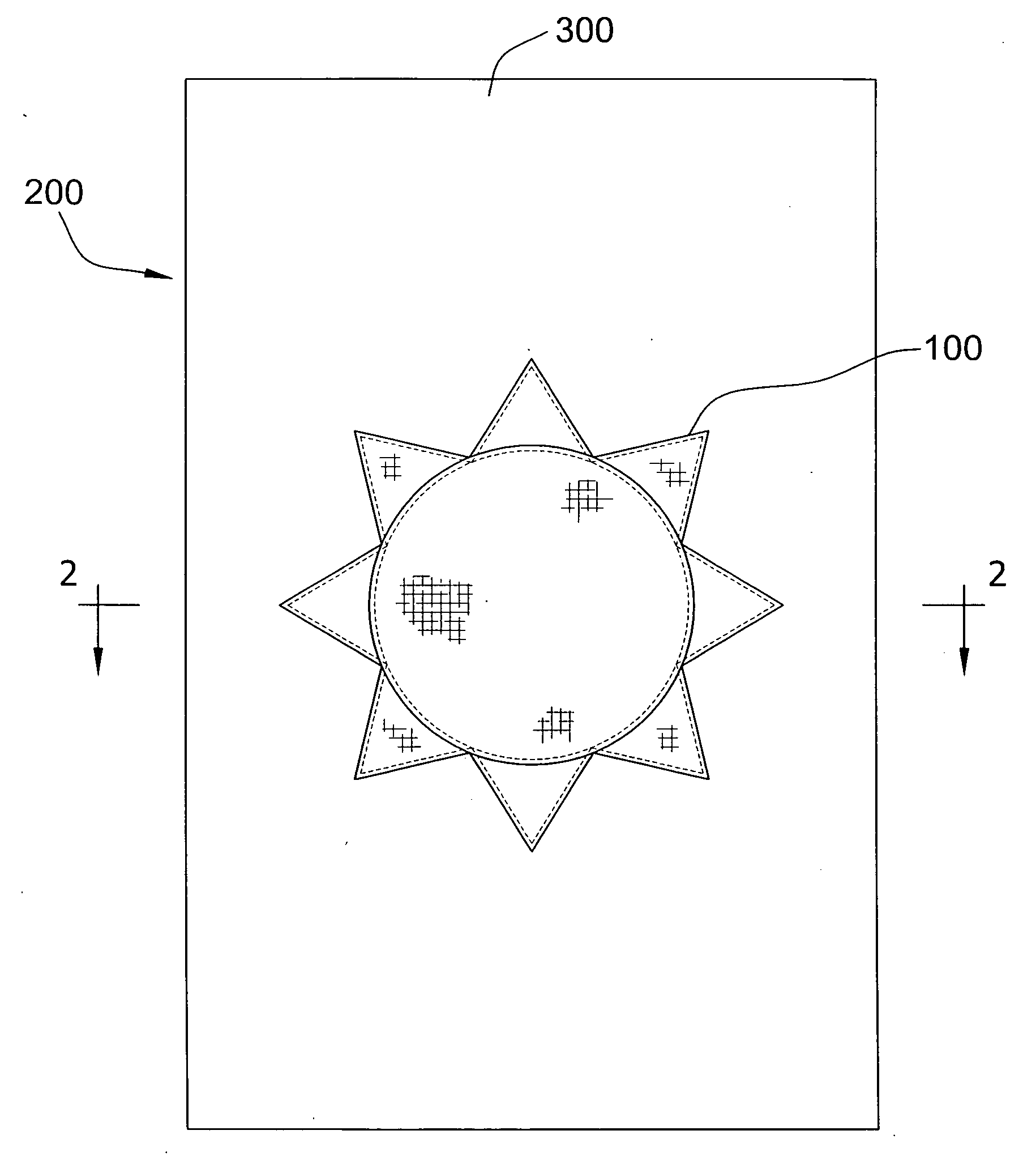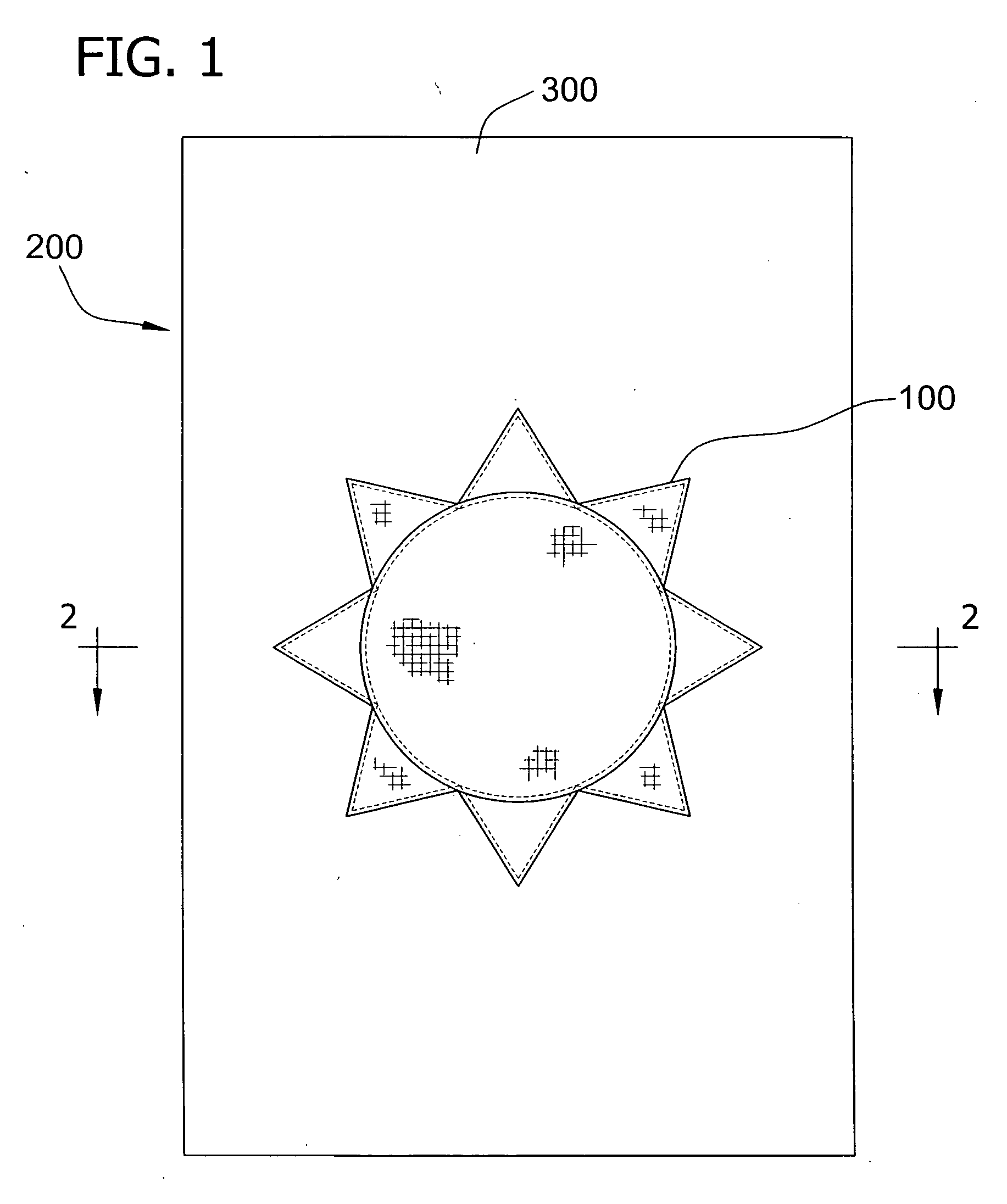Process for making a non-woven substrate with vibrant graphic thereon
a technology of graphic and substrate, applied in the field of substrates, can solve the problems of increasing impression pressure, not yielding significant improvement in vibrancy, and affecting the vibrancy of the substrate,
- Summary
- Abstract
- Description
- Claims
- Application Information
AI Technical Summary
Benefits of technology
Problems solved by technology
Method used
Image
Examples
experiment 1
[0063] An experiment was conducted to determine the effects of various parameters on the vibrancy (e.g., color density) of solid red and solid black square graphics applied to a laminate non-woven substrate. The parameters examined included the use of a thermally bonded laminate versus an adhesive bonded laminate; polyethylene fibers versus polypropylene fibers; ink compositions having an initial ink made by Sun Chemical Co. versus those having an initial ink made by Color Converting Industries (CCI) of Des Moines, Iowa, U.S.A.; anilox roll volume; and print plate material.
[0064] The tested parameters are more particularly set forth below.
[0065] Non-Woven Substrate Parameters
[0066] 1. Substrate Construction
[0067] A. A laminate comprised of a spunbond fibrous non-woven web of 2.5 denier homofilament fibers composed of a polymer available from Exxon under the trade designation 3155 polymer, and a 0.5 weight percent TiO2 additive. The fibrous non-woven web was point bonded in a wir...
experiment 2
[0095] A follow-on experiment was conducted to determine the effects of various parameters on the vibrancy (e.g., color density) of solid red square graphics applied to a laminate non-woven substrate. The parameters examined included the use of two different fibrous non-woven web constructions adhesively laminated to a film to form the laminate non-woven substrate; substrate treatment prior to printing, ink composition viscosity, solvent type, anilox roll volume, primer, print plate material, and impression pressure.
[0096] The tested parameters are more particularly set forth below.
[0097] Non-woven Substrate Parameters
[0098] 1. Substrate Construction
[0099] A. A laminate comprised of a spunbond fibrous non-woven web of 2.5 denier homofilament fibers composed of a polymer available from Exxon under the designation 3155 polymer, with a 0.5 weight percent TiO2 additive. The fibrous non-woven web was point bonded in a wire weave bonding pattern. The fibrous non-woven web was also nec...
experiment 3
[0131] A third experiment was conducted to determine the impact of various non-woven substrate parameters on the vibrancy (e.g., color density) of solid red square graphics applied to a laminate non-woven substrate. The parameters examined included the basis weight of the fibrous non-woven web of the substrate, the polyolefin from which the fibers were constructed, and whether or not the fibrous non-woven web was laminated to a backing layer.
[0132] The tested parameters are more particularly set forth below.
[0133] Non-woven fibrous web construction
[0134] All fibrous webs were point bonded over a 10 percent bond area.
[0135] 1. Basis weight
[0136] A. 20 gsm (0.6 osy)
[0137] B. 34 gsm (1.0 osy)
[0138] 2. Fiber Composition
[0139] All fibers were 2.5 denier bicomponent fibers having a sheath / core configuration in which the core comprised 70 weight percent mPE available from Dow Chemical under the designation Dow Affinity XUS59400. The sheath was one of the following:
[0140] A. 30 wei...
PUM
| Property | Measurement | Unit |
|---|---|---|
| thickness | aaaaa | aaaaa |
| elongation | aaaaa | aaaaa |
| elongation | aaaaa | aaaaa |
Abstract
Description
Claims
Application Information
 Login to View More
Login to View More - R&D
- Intellectual Property
- Life Sciences
- Materials
- Tech Scout
- Unparalleled Data Quality
- Higher Quality Content
- 60% Fewer Hallucinations
Browse by: Latest US Patents, China's latest patents, Technical Efficacy Thesaurus, Application Domain, Technology Topic, Popular Technical Reports.
© 2025 PatSnap. All rights reserved.Legal|Privacy policy|Modern Slavery Act Transparency Statement|Sitemap|About US| Contact US: help@patsnap.com



